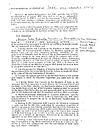- Instrument of Accession (Jammu and Kashmir)
-
Instrument of Accession (Jammu and Kashmir) Instrument of Accession of Jammu and Kashmir state to the Union of India 
Page 1 of Treaty Type Accession Treaty Signed 26 October 1947 Location Srinagar/Delhi Sealed 27 October 1947 Effective 27 October 1947 Condition Acceptance by the Governor-General of India Expiration Perpetual Validity Signatories  Maharajah Hari Singh,
Maharajah Hari Singh,
 Mountbatten of Burma
Mountbatten of BurmaParties  Jammu and Kashmir
Jammu and Kashmir
 Dominion of India
Dominion of IndiaDepositary Dominion of India Language English The Instrument of Accession is a legal document executed by Maharajah Hari Singh, ruler of the princely state of Jammu and Kashmir, on 26 October 1947.[1][2] By executing this document under the provisions of the Indian Independence Act 1947, Maharajah Hari Singh agreed to accede to the Dominion of India .[3][4]
In a letter sent to Maharajah Hari Singh on 27 October 1947, the then Governor-General of India, Lord Mountbatten accepted the accession with a remark, “it is my Government's wish that as soon as law and order have been restored in Kashmir and her soil cleared of the invader the question of the State's accession should be settled by a reference to the people.” [5] Lord Mountbatten’s remark and the offer made by the Government of India to conduct a plebiscite or referendum to determine the future status of Kashmir led to a dispute between India and Pakistan regarding the legality of the accession of Kashmir to India.[6][7] India claims that the accession is unconditional and final while Pakistan maintains that the accession is fraudulent.[8]
The accession to India is celebrated on Accession Day, which is held annually on October 26.[9]
 The Instrument of Accession to the Union of India signed on 26 October 1947, and accepted the following day.
The Instrument of Accession to the Union of India signed on 26 October 1947, and accepted the following day.
 Page 2, Instrument of Accession, with signatures of Maharaja Hari Singh of Jammu and Kashmir, and Viscount Mountbatten of Burma, Governor-General of India.
Page 2, Instrument of Accession, with signatures of Maharaja Hari Singh of Jammu and Kashmir, and Viscount Mountbatten of Burma, Governor-General of India.
The preamble says that:
Whereas the Indian Independence Act, 1947, provides that as from the fifteenth day of August, 1947, there shall be set up an Independent Dominion known as India, and that the Government of India Act 1935 shall, with such omission, additions, adaptations and modifications as the governor-general may by order specify, be applicable to the Dominion of India.And whereas the Government of India Act 1935, as so adapted by the governor-general, provides that an Indian State may accede to the Dominion of India by an Instrument of Accession executed by the Ruler thereof.Now, therefore, I Shriman Inder Mahander Rajrajeswar Maharajadhiraj Shri Hari Singhji, Jammu and Kashmir Naresh Tatha Tibbetadi Deshadhipathi, Ruler of Jammu and Kashmir, in the exercise of my sovereignty in and over my said State do hereby execute this my Instrument of Accession and1. I hereby declare that I accede to the Dominion of India with the intent that the governor-general of India, the Dominion Legislature, the Federal Court and any other Dominion authority established for the purposes of the Dominion shall, by virtue of this my Instrument of Accession but subject always to the terms thereof, and for the purposes only of the Dominion, exercise in relation to the State of Jammu and Kashmir (hereinafter referred to as "this State") such functions as may be vested in them by or under the Government of India Act, 1935, as in force in the Dominion of India, on the 15th day of August, 1947, (which Act as so in force is hereafter referred to as "the Act").It is further specified that:
3. I accept the matters specified in the schedule hereto as the matters with respect to which the Dominion Legislature may make law for this State.Thus the power of the Dominion to make laws was restricted to the matters mentioned in the Schedule namely Defence, Foreign Affairs and Communications and a few ancillary subjects specified in the schedule. For all other matters concurrence of the State Government was essential.[10]
See also
References
- ^ Justice A. S. Anand, The Constitution of Jammu & Kashmir (5th edition, 2006), page 67
- ^ Kashmir, Research Paper 04/28 by Paul Bowers, House of Commons Library, United Kingdom., page 46, 2004-03-30
- ^ Patricia Gossman, Vincent Iacopino, Physicians for Human Rights,”The crackdown in Kashmir” (1993),page 10
- ^ Bruce B. Campbell, Arthur David Brenner,” Death squads in global perspective: murder with deniability”(2002),page 271
- ^ Thomas Bruce Millar,” The Commonwealth and the United Nations ”( 1967),page 26
- ^ Sumit Ganguly, “Conflict unending: India-Pakistan tensions since 1947”(2001),page 154
- ^ KASHMIR QUESTIONS by A.G. NOORANI
- ^ Kashmir: The origins of the dispute by Victoria Schofield
- ^ "Jammu all set to celebrate accession day". Sify. http://sify.com/news/jammu-all-set-to-celebrate-accession-day-news-national-kkzsuicghgb.html. Retrieved 2007-12-31.
- ^ Instrument of Accession full transcription at jammu-kashmir.com
External links
- Page 1 of the instrument
- Page 2 of the instrument
- Original Accession Document
- The full instrument in text mode.
- Proclamation of May 1, 1951 on Jammu & Kashmir Constituent Assembly by Yuvraj (Crown Prince) Karan Singh from the Official website of Government of Jammu and Kashmir, India
- Conflict in Kashmir: Selected Internet Resources by the Library, University of California, Berkeley, USA; [[University of California, Berkeley Library Bibliographies and Web-Bibliographies list]
- Andrew Whitehead's book A Mission in Kashmir, which challenges the official account of the signing of the accession document
Categories:- Legal documents
- Jammu and Kashmir
- Independent India
- History of Jammu and Kashmir
- Indian historical documents
- Kashmir conflict
- 1947 in India
- Treaties concluded in 1947
- Treaties entered into force in 1947
Wikimedia Foundation. 2010.
